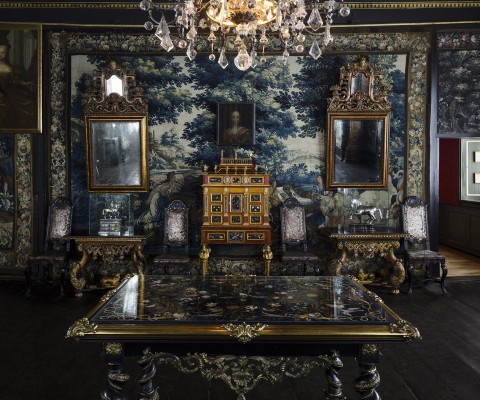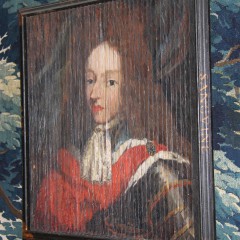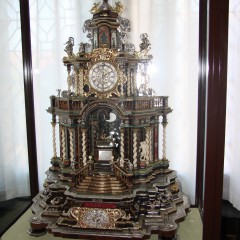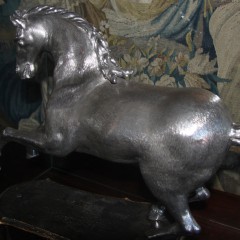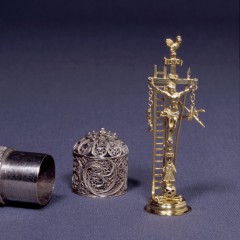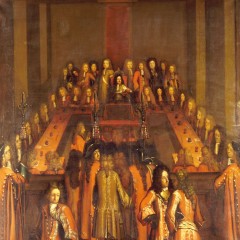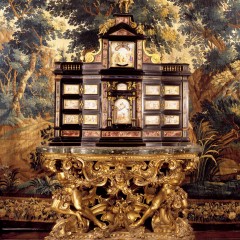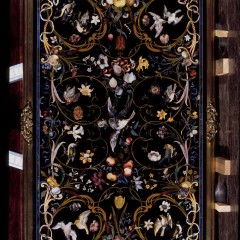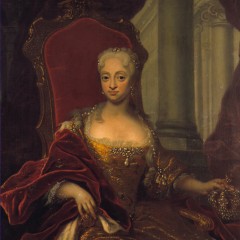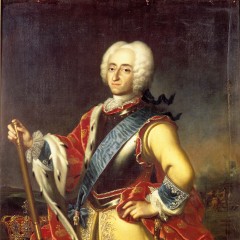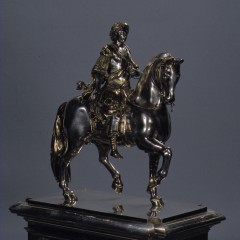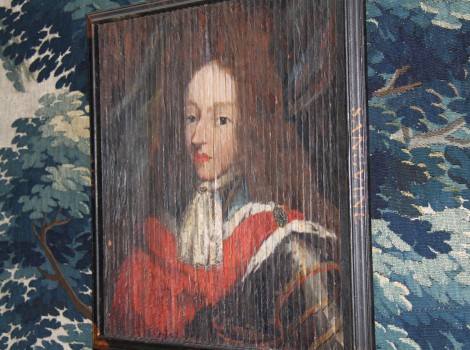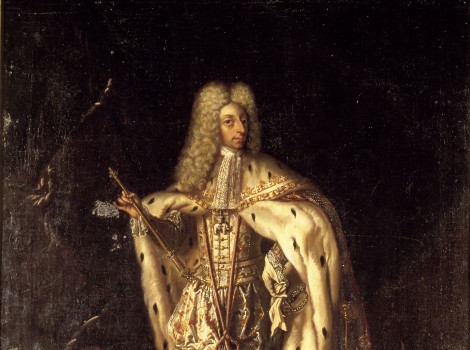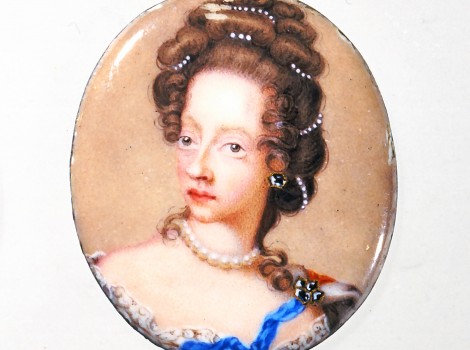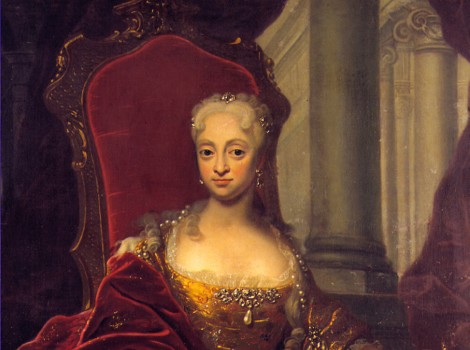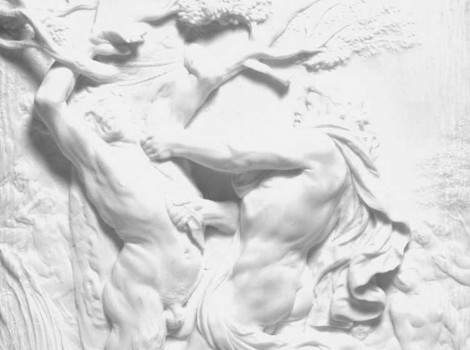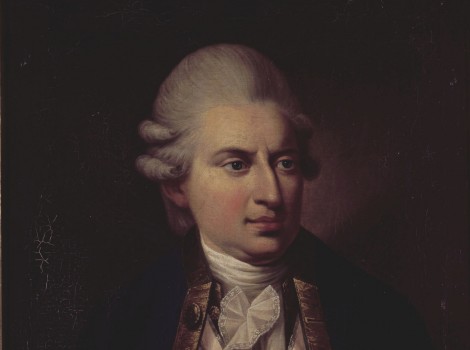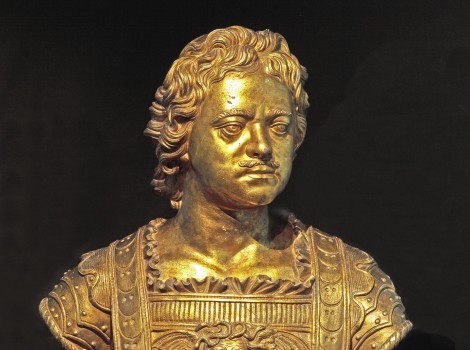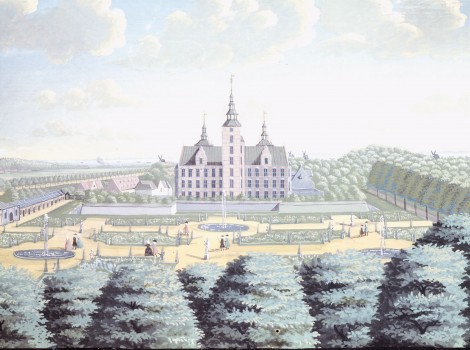10 Frederik IV’s Hall
ROOM 10: This room was originally one bay longer and was used as Christian IV’s Audience Chamber. A marble fireplace, now in the King’s Chamber, and ceiling paintings with mythological motifs, now in Christian IV’s Winter Garden , were among the room’s original decorations; on the walls were family portraits of the King’s family.
As part of a conversion in 1700, the room was shortened and furnished as an antechamber for Frederik IV’s sister, Princess Sophie Hedevig. During the conversion, the ceiling panels with painted emblems were put up; they were originally on the oldest ceiling of the Long Hall and possibly painted by Anders Nielsen in 1623. At the same conversion the walls were covered with tapestries woven in Oudenaarde in the Netherlands, in modern day Belgium.
The chandelier of rock crystal with arms of chiselled steel was probably made in Vienna by Anton Matthias Joseph Domanöck. It was a present from the Austrian Empress Maria Theresia. From 1754 to 1794 it hung in the King’s Audience Chamber at Christiansborg Palace.

 Dansk
Dansk
 English
English
 Deutsch
Deutsch



